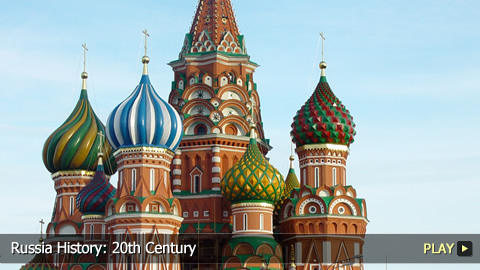Russia History: 20th Century

advertisement
VOICE OVER: Rebecca Brayton
Russia entered the 20th century during a period of revolution. Public unrest continued throughout World War I and shortly thereafter Vladimir Lenin would help to turn Russia into a socialist state. Many changes came along with the creation of the Soviet Union and the economy was further transformed with Stalin's rise to power. Then, after many people were killed in the 2nd World War hostilities with the West persisted with the Cold War. The Soviet Union collapsed in 1991. In this http://www.WatchMojo.com video, we trace the history of 20th century Russia.
Sign in to access this feature
Sign in
to access this feature
